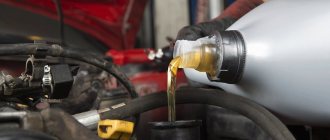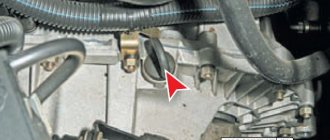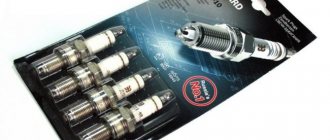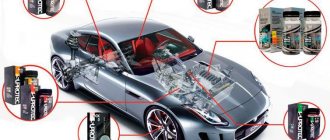How many liters of oil are needed for the automatic transmission of a Toyota Corolla?
Changing the oil in a Toyota Corolla automatic transmission requires a minimum of effort and available tools. This car is quite easy to repair and maintain independently. Moreover, if we are talking only about replacing consumables. In this article, we will look at how to choose the right consumables, what is the frequency of replacement, and also how much oil is required for a Toyota Corolla automatic transmission.
Regulations
The Japanese automaker has established clear regulations for changing the oil in the Toyota Corolla automatic transmission. It is about 60 thousand kilometers, but may differ for the worse depending on operating conditions. So, if the machine is not subjected to high loads, is operated in warm climatic regions and travels on high-quality roads, then you can rely on the maximum replacement period. But the situation can become more complicated if the motorist encounters unpredictable weather and road conditions. Let's highlight a few of them:
- A sharp change in temperature, frost gives way to thaw, and as a result - dirt and slush on the roads
- Driving on bad roads, including off-road with muddy ground
In such conditions, transmission oil will become unusable faster than the replacement period of 60 thousand kilometers. Russian motorists are well familiar with such factors, who prefer to reduce replacement to 40 thousand kilometers. In extreme cases, it is necessary to change the oil after 30 thousand if the driver makes mistakes in driving the car - for example, constantly exceeds the speed, does not work correctly with the gearbox and clutch, and as a result, overheating of important components occurs. But on the other hand, sometimes you have to subject the car to extreme loads, given difficult climatic and road conditions
But here it is important to keep in mind that in such a situation you will have to resort to changing the oil more often. Moreover, it is advisable to frequently monitor the volume and condition of consumables
How to check the volume and condition of the oil
Toyota Corolla is equipped with a dipstick with special marks. They can be used to determine whether there is enough oil in the gearbox. For example, if the fluid is below the minimum level (Min), then oil will need to be added. At the same time, it must be added gradually, avoiding overflow. Otherwise, you will have to crawl under the car and drain the liquid. To achieve the optimal level, it is necessary that the oil is no higher than the maximum mark (Max) on the dipstick.
It is important to understand that the procedure for adding oil is only relevant for cars with low mileage, or if the oil is changed in a timely manner. But if you do not follow certain rules and expose the car to high loads, as written above, you may encounter unpredictable breakdowns in the gearbox
In such cases, the oil has most likely completely lost all its beneficial properties. As a result, the transmission is unstable and constantly overheats. Four signs indicate that the oil is unsuitable: darkened color, cloudiness, presence of sediments and metal shavings. In addition, spoiled oil can emit specific odors. If such signs are detected, the old oil should be drained immediately.
Choosing oil for automatic transmission Toyota Corolla
Before adding new oil, you must make sure that this product meets all the parameters specified in the instructions. In other words, the oil must be fully compatible with the Toyota Corolla automatic transmission. Therefore, in order to avoid mistakes in the selection process, you must rely on the manufacturer’s instructions. For example, you should only fill in original Toyota ATF Type T-IV oil. This product has optimal viscosity parameters and is designed for a long service life. As for the type of oil, in our case only synthetic is suitable. It is recommended to fill in semi-synthetic oil only with high mileage, or in case of lack of funds for expensive synthetic oil.
How much to fill
Toyota requires 4 liters of transmission fluid to be poured into the Corolla automatic transmission. This volume is the maximum and can only be entered during a complete oil change. During this procedure, the old fluid is first drained, then a flushing agent is introduced, which is circulated throughout the entire transmission with the engine running. The flush is then drained along with any dirt and metal shavings that may have gotten inside through a clogged oil filter. The final stage is filling the new oil in full. The level is adjusted to normal using a dipstick.
Manual transmission operating modes
Due to operating conditions, the car's gearbox must provide 1 - 2 lower gears, reverse speed and several higher gears. Large ratios (5/1 – 3.5/1) are used in lower gears. At the same time, the transmission of an SUV reaches a power range of 9 units, while in passenger cars it is limited to 6 units. The traction force in lower gears is maximum, but the car cannot reach high speed.
The gear ratios of the middle gears are in the range of 2.5/1 – 1.5/1. Engine noise is reduced at the same speeds. These gears are considered “short” and greatly tire the driver, as they require frequent switching in changing driving conditions.
Higher gears reach a gear ratio close to 1/1, that is, the shafts rotate at the same angular speeds. This is convenient on the highway when driving at a constantly high vehicle speed.
Classic gearboxes usually use 3 shafts - primary, intermediate and secondary. The gear units have helical gears to reduce noise. In addition to gears, the box contains synchronizers, cams and clutches.
For gearboxes with old-style synchronizers, budget manual gearbox oil marked GL-4 is used. For most modern cars, manufacturers specify hypoid oil GL-5.
Attention: An attempt to improve the quality of the lubricant in the gearbox of a domestic VAZ with high mileage will lead to the exact opposite effect - the operation of the synchronizers will be disrupted, since the films from these transmission lubricants have different properties.
The oil should be changed either at a service station, whose employees do not make such mistakes, or you should adhere to the requirements specified in the manual for operating the machine.
Transmission lubricant is considered a consumable material; after a certain mileage, its components begin to deteriorate, and metal shavings and foreign impurities accumulate inside, and the modifying additives decompose. That is why changing the oil in a manual transmission must be timely and technically competent.
How to change gearbox oil in am gazelle, how much is included and which one to choose
Replacing a timing belt or timing kit.
After how many thousand to change 3 It so happened that the gazelle received a highly modernized box from a Volga car
It is important to understand that the Volga is a passenger car, and the Gazelle is a truck, which often works with overload and the gearbox is a consumable item. At least somehow extending the life of the box will help to use high-quality oil and adherence to its replacement interval.
How to change the oil in the gearbox of a Gazelle car?
We need a tool:
Hexagon 12 - we will use it to unscrew and tighten the drain plugs
Basin - we will drain used oil into it
Syringe - we will use it to fill in the oil, but if you wish, you can do without it.
Oil change procedure:
- We drive 10-20 km so that the oil in the box warms up and becomes more liquid.
- We drive into a pit or lift (or simply crawl under the frame as the height of the body allows)
- Unscrew the drain plug and substitute the basin
- We are waiting for the oil to stop draining
- We wipe the magnet of the drain plug from shavings and wrap it back.
- We unscrew the filler plug and fill in the oil with a syringe until it runs out of the filler plug.
- We wipe the threads and tighten the filler plug.
All the oil in the box has been changed and you can drive =)
If you do not have a syringe, you can pour oil into the box through the gear shift lever. To do this, remove the rubber cover and unscrew the lever itself (done by hand without tools, by hand).
Pour the oil directly into the box. Accordingly, fill in the oil until it comes out of the filler plug.
I warn you against filling the oil “according to the norm” (1.2 liters)! The fact is that the castings of the boxes are slightly different and what is normal for one box will not be enough for another! Remember, a low level is bad because the insides of the box will quickly wear out, and a high level is bad because the seals will start to sweat oil! Fill with oil until it comes out of the filler neck!
If you cannot unscrew the filler plug, try the plug on the other side (the exhaust pipe may be in the way). It’s strange, but true, there are 2 filler plugs on the gearboxes of gazelles and Volgas, this is due to the fact that the cars were equipped with different engines in different years and their exhaust pipes were on different sides.
Oil change interval in the gearbox of a gazelle car.
The factory recommends an oil change interval of 50,000 km, but in practice, in a gazelle box it is better to change it twice as often, i.e. every 3 engine oil changes or 30,000 km. Unless genuine synthetic motor oils can be changed less frequently.
The author of this article bought a new gazelle with a 421 engine in 2009 and the gearbox covered only 40,000 km with factory oil, then its first gear began to fall out and it began to hum, a replacement under warranty saved the day.
After that, Mannol GL4 85w-90 was poured into the box, with this oil the box traveled 240,000 km with oil changes every 50,000 km, after which the car was sold and the box was in excellent condition when sold. The problem is that this oil costs more than 600 rubles per liter..
Which oil should I choose for the gearbox of a gazelle car?
Let's start with what our favorite plant pours... And the plant pours something cheaper - TAD 17.... In fact, this oil should be changed immediately at the first maintenance. I have always been amazed by such a disregard for the consumer, but this is a given...
The plant itself recommends pouring GL4 oil with a viscosity of 75W-90 into the gearbox; it is acceptable to pour GL5 oil with a similar viscosity, but it has a higher sulfur content and wears out the synchronizers somewhat faster.
If you are faced with a choice between mineral, semi-synthetic and synthetic oil, then you should definitely choose the last 2, despite the fact that they are more expensive. The fact is that in winter, using mineral water, gasoline consumption increases very much and the gears are very difficult to engage (until it warms up completely).
boxes), and starting the engine without pressing the clutch is almost impossible...
We agreed - we fill in high-quality GL4 75w-90, GL5 is also possible, but it contains more sulfur and wears out the synchronizers faster.
How much oil is included in a gazelle box?
Officially, according to the passport, 1.2 liters are poured into the box. But due to casting defects and various technological jambs, and various modifications, the actual volume of oil in the box varies in the range of 1.2 - 1.5 liters. In any case, you will have to buy 2 liters for replacement. You won’t get rich from 200 grams, and underfilling will ruin the box, so fill the oil strictly according to the level of the oil filler plug.
Lubricant level diagnostics
Due to the use of different gears (planetary, cylindrical, bevel), the oil level in the manual transmission is different.
Transmission manufacturers have made it easier for users to check the oil level:
- either a dipstick is built into the filler plug, or the neck is located at the level of the oil mirror;
- the drain plug is equipped with a magnet that collects metal shavings;
- the bottom of the crankcase has a slope towards the drain hole, but the car must be horizontal, and the lubricant flows through the funnel.
Having decided which oil to pour based on viscosity and operating temperature, you can change the lubricant in the garage yourself. The operating manual indicates the amount of oil. The algorithm for checking the lubricant level in the gearbox is extremely simple:
- the engine must be warmed up and then cooled down within 3 hours after the trip;
- install the machine horizontally;
- clean the gearbox housing near the filler plug and unscrew it with a wrench.
The norm is the level along the lower edge of the filler hole; in all other cases, the user pours it in until the lubricant begins to pour back out.
What is the volume of the VAZ 2110 box
How long does it take to change engine oil?
In the proposed material we will determine exactly how much oil to pour into the VAZ box. The meticulousness of the question is justified, since the normal operation of the vehicle is at stake. Young drivers will learn how many liters of lubricant should be purchased for one-time filling into the gearbox crankcase.
The modifications of this car with different power units produced by the auto company are equipped with the same type of variable speed gearboxes with minimal technical correction. The designers are one hundred percent right here. Why reinvent another wheel when launching an updated old model into series. The unification of the transmission unit is justified from an economic point of view.
The unified unit initially requires an exact volume of oil in the box. So, how much oil is in the box of the popular VAZ 2110 - 3.5 liters. The lubricant is enough for a car to run 60 thousand kilometers. After which you should change the lubricant. It is necessary that the crankcase contains exactly this amount of lubricating consistency. That is 3.5 liters.
More is possible, but the reserve is detrimental to the car. Increased volume:
- quickly destroys numerous oil seals;
- negatively affects engine power;
- increases fuel consumption.
The negative will definitely appear if you add even 200 grams above the norm.
Table of volumes of several brands (how much to pour for a complete replacement)
Amount of oil in automatic transmission
(in liters, for complete replacement)
This is where I end, I think the article was useful to you. Read our AUTOBLOG.
(
11 votes, average: 4.45 out of 5)
Similar news
Transmissions are not included. Appears when the engine is running - os.
How much does it cost to change the oil in an automatic transmission? Detailed material.
A robotic gearbox is different from an automatic one. Cap.
About types of transmission oils
How long does it take to change brake fluid?
Today, two types of gear oils can be found on the fuel and lubricants market: GL-5 standard oil and GL-4 standard oil. Here are their differences:
- GL-4 standard. These are transmission oils used in gearboxes and drive axles with hypoid and bevel gears operating at moderate temperatures and loads;
- GL-5 standard. It includes transmission oils used in high-speed axles and gearboxes operating under conditions of high temperatures and alternating shock loads.
From the above, it becomes clear that the GL-5 standard provides better extreme pressure protection for the gears in the transmission. But this is a common misconception to which many car owners, including VAZ 2107 owners, are susceptible.
Let's take a closer look at this point.
Transmission oils of the GL-5 standard use special complexes of sulfur-phosphorus additives, which create an additional protective layer on the rubbing steel parts of the gearbox. But if such an additive comes into contact with parts containing copper or other soft metal, then the protective layer formed by the additive turns out to be stronger than the copper surface. As a result, wear on the soft metal surface accelerates several times.
Research shows that the use of GL-5 standard lubricant in gearboxes that require GL-4 standard lubricant is not only not advisable, but also dangerous.
For example, synchronizers in VAZ 2107 boxes are made of brass.
And with prolonged use of GL-5 oil, they will be the first to fail. It is for this reason that the owner of a VAZ 2107 should fill only GL-4 standard oil into the gearbox.
The second most important point that the owner of a VAZ 2107 should remember is the viscosity class of the oil being poured. Today there are two such classes:
- class SAE75W90. It includes semi-synthetic and synthetic transmission oils, which motorists call all-season. This lubricant works in a wide temperature range - from -40 to +35°C. It is this class of oils that is ideal for use in our country;
- class SAE75W85. The upper temperature limit for oils of this class is higher. But it should not exceed 45°C, since at this temperature the oil begins to boil.
Brand and volume of oil for gearbox VAZ 2107
There are several brands of GL-4 gear oil that are especially popular among VAZ 2107 owners. We list them:
The volume of oil poured directly depends on the number of gears in the car’s gearbox. If the VAZ 2107 is equipped with a four-speed gearbox, then it will require 1.4 liters of oil, and for a five-speed gearbox it will require 1.7 liters.
Choosing the right oil
Of course, the manufacturer recommends using domestic oils. There are many options available in the automotive market. It can be any company, the main thing is that the working fluid has the required viscosity and meets the quality class according to API/ACEA standards. AvtoVAZ recommends filling in 2114:
- VOLNEZ TM4.
- REXOL T.
- OMSKOIL TRANS P.
Of course, the gearbox oil should be “weather-appropriate”. For example, operating a car in winter with a liquid that is designed for above-zero temperatures will not only be harmful to the structure, but also dangerous. If in winter the VAZ 2114 can be started immediately after pressing the clutch pedal, then the oil was chosen correctly.
Replacement features
After filling in new oil, some motorists have problems operating the car. Usually the cause is incorrect replacement, but sometimes defects appear due to the fault of factory assembly. Sometimes when driving in fifth gear, a hum appears, and changing to this gear can be difficult. If these signs are present, then it is worth checking how much fluid is poured into the gearbox reservoir.
When o, but the hum remains, it is necessary to add gearbox fluid above o. This is a feature of the Samara model range: the fifth gear is located the highest, so the level of the working fluid may not reach it.
The gearbox, like other car parts, needs high-quality maintenance. First of all, the uninterrupted operation of the gearbox during operation depends on the condition of the transmission fluid. In this article you will learn the main points that relate to changing the lubricant, its choice and the cost of the work.
Technical regulations on the amount of transmission substance
Transmission fluid is monitored every 10 thousand km, i.e. during the next maintenance. Before checking the amount of substance, you need to let the car sit for a while. During this period, the transmission fluid will have time to flow down the walls of the box. If the fluid level reaches the edge of the lower edge of the filler hole, then its volume is quite sufficient, and the oil is not replaced or topped up.
How much transmission oil will be needed when completely replacing it directly depends on the type of gearbox.
According to the technical instructions, the following volume of liquid is established:
- for 4-mortar – 1.35 l;
- for a 5-mortar – 1.6 l.
Experienced drivers advise filling the 5-mortar with lubricant slightly above the set level - “as much as it will fit.” To do this, lift the car from the driver's door with a jack. Then add 250–300 g of liquid. This will ensure reliable lubrication of the 5th gear gear. There is no need to be especially afraid of increased pressure on the seals, since excess pressure is released through the breather.
Changing the gearbox oil
The manufacturer recommends changing the oil in a manual transmission after 90 thousand kilometers or 7 years, whichever comes first. In an automatic transmission (if it is installed on a car), the working fluid should be replaced after 60 thousand kilometers or 6 years, whichever comes first. The volume of oil poured into a manual transmission is 2.8 liters, the working fluid for an automatic transmission is 5.4 liters.
| NOTES For a manual transmission, use gear oils with parameters not lower than API GL-4, SAE 75W-85W or 75W-90. For automatic transmissions, the manufacturer recommends ATF SP-III working fluid. |
| HELPFUL ADVICE It is recommended to drain the oil (working fluid) within 15 minutes after the trip, until it has cooled down and has good fluidity. |
This is where the oil filler plug of a manual transmission is located.
You will need: a 23mm socket, extension, wrench, container for collecting used oil, syringe.
To change the oil in a manual transmission, follow these steps:
| 1. Place the vehicle on a lift or inspection ditch. |
| 2. To facilitate draining the oil from the gearbox, remove the dipstick. |
| NOTE The oil filler plug has a copper O-ring. Inspect it carefully and replace a heavily compressed or deformed ring. |
| 3. Loosen the drain plug... | 4. ...unscrew the plug... |
| 5. ...and drain the oil into a prepared container. |
| 6. Close the drain plug. |
| 7. Remove the air filter (see “Removing and installing the air filter”). |
| 8. Fill the gearbox with oil using a syringe, monitoring the oil level using the indicator. |
| NOTE Technological operations associated with replacing the working fluid in an automatic transmission are quite labor-intensive and require certain skills and a large volume (about 20 liters) of working fluid. Replace the fluid in the automatic transmission at service stations with special equipment. |
Selection of transmission oil
The main choice of oil is between the following types:
- mineral;
- semi-synthetic;
- synthetic.
Mineral oil
used on older vehicle models. Due to its low viscosity and fluidity, it holds well in boxes with significant wear and possible gaps in the body.
Semi-synthetic
has a lower viscosity and penetrates more easily into various areas of any gearbox. It usually contains chemical additives that increase corrosion resistance and protect against boiling or significant overheating.
Synthetic oil
is the most fluid due to its low viscosity. The molecules of this lubricant can quickly penetrate through various cracks, so in a gearbox with poor sealing properties, leaks and a decrease in its volume are possible.
Transmission oil
For those who are interested in how many liters of oil should be in the gearbox, we will give you an approximate formula. For “classics” you will need a volume of about 1.5 liters, and for cars of the “nine” or “tens” model range you will need to stock up on 3.5 liters.
Changing the oil in the VAZ 2106 engine, as well as the oil filter
Changing the gearbox oil is one of the most important aspects of car care. The oil ensures uniform lubrication of the rubbing elements of the transmission, and also serves as a coolant, removing temperature from the heated surfaces of the parts.
Box volume in liters?
A five-speed gearbox holds about 3.3 liters of gear oil, a four-speed gearbox holds about 3.0 liters.
What kind of oil should I put in the box?
The manufacturer recommends the following brands of oils:
- Reksol T (80W-85; GL-4)
- Volnez TM4” (80W-90; GL-4)
- Omskoil trans P (80W-85; GL-4/5)
How to change the oil in a VAZ 2108 box with your own hands
Changing the oil in the gearbox, like changing the oil in the engine, is done “hot”, that is, immediately after a trip, when the oil is warm and in a more liquid state. This work is carried out on an inspection pit or a lift.
The upper mark on the dipstick is the optimal level of transmission oil in the gearbox; it is not recommended to pour above the indicated mark, since in this case oil may leak from the gearbox. The bottom mark on the dipstick is the minimum permissible level, after which it is necessary to add oil to the box. If this is not done or not noticed in time, you can cause irreparable damage to the gearbox parts, after which it will very soon fail.
Changing the oil in a VAZ 2108 gearbox - step-by-step instructions
1. Remove the rubber cap, then wash it and use a wire to clean the hole in the breather, then install it back.
2. Place a waste oil container under the drain hole.
3. Now unscrew the oil drain plug.
- Carefully drain the oil. Wait some time for the used gear oil to completely drain into the container.
- Screw in the oil drain plug.
- Before changing the oil in the VAZ 2108 gearbox, remove the oil level dipstick.
- Take a can of oil or a special oil can and pour clean oil into the hole.
8. Now you need to clean the dipstick from any remaining old oil and measure the oil level in the gearbox.
9. To do this, put the dipstick in place, then remove it again and make sure that the oil level is within the upper and lower marks. As I already said, it’s better when the level is at the top mark.
10. On more “ancient” old-style transmissions (without a dipstick), the filler neck is located on the right side of the gearbox housing.
11. Unscrew the cap, then pour oil into the box using a syringe. The optimal level will be the level of the lower edge of the oil filler hole.
That's all about changing the oil in the gearbox, now all that's left is to wash your hands and start using it.
Classification of transmission oil, or which oil is better to use?
Transmission oils can be either mineral, semi-synthetic or full synthetic. Which one is better? Now let's try to figure it out.
Let's start with mineral gear oil. This oil is designated according to the SAE 85W-90 system. What are the positives? In principle, mineral water itself is not bad and has fairly good lubricating properties. A significant plus is its price, which is the lowest of all
.Disadvantages – low temperatures. Mineral oil is not recommended for pouring into the engine due to its thickening at low temperatures. The reason for his disapproval for the checkpoint is the same. You just won't start the car. 85W-90 oil has a pour point of only -12 degrees Celsius. This is not enough for our climate. Semi-synthetic and synthetic – 75W-90. Recommended for use in gearboxes of VAZ cars. This oil can extend the life of gearbox parts. Although the price of such oil is higher than that of mineral water, and synthetics are even more expensive, the effect of it will be noticeable to the naked eye. According to reviews from owners who have filled in synthetic or even semi-synthetic oil from normal companies that provide high-quality oil, there is no noise in the gearbox, the gears shift smoothly - in a word, they are satisfied. 75W-90 freezes at -40 degrees, which is quite enough. Conclusion: it is better to use semi- or full synthetics.
By the way, from the factory they began to fill VAZ cars of the Samara and 2110 families with regular motor oil. What to do in this case? Should I change it to a transmission one or not, arguing that “the factory knows better”? It’s interesting what VAZ engineers themselves say about this. According to the head of the AvtoVAZ fuel and lubricants laboratory, in order to increase the service life of gearbox parts such as synchronizers, differentials and, in general, increase service life, it is recommended to replace the oil with transmission oil during the first maintenance. The noise level will immediately decrease and gears will shift much easier. You can also use API GL-5 oils, but this is not strictly necessary.
When and how often do you need to change the gearbox oil review and tips
If you love to ride, you also love to change the oil in the gearbox! A completely natural question: “When to change the oil in the gearbox?” But let's figure this out.
Oil helps the gearbox feel good, namely its quality. There is often a debate among car enthusiasts: is it worth changing the gearbox oil at all? It would seem, why not? But the fact is that problems with the gearbox happen so rarely that other parts of the car are more likely to break down when the transmission still feels quite vigorous.
The car no longer drives at all, but she is still quite well. And therefore, many believe that the gearbox does not need to replace the fluid at all: all you need is the factory binder addition and drive as much as you like. But this is not entirely the right approach.
When is the best time to replace?
If there are strange sounds in the box
During the operation of the gearbox, moisture and metal particles get into it, torn from the gears during their wear. And this leads to a loss of quality and regulatory functions of the checkpoint. Therefore, while shifting gears, listen for strange sounds that you have not noticed before. This may include grinding, buzzing, buzzing or howling sounds.
If upon inspection it is clear that the oil has turned black and smells of burning
To be completely sure, you need to inspect the fluid using a dipstick to check the level. If it turns black and emits a burning smell, then perhaps the time has come when it is simply necessary to change the lubricant.
Depending on mileage
Depending on the car manufacturer and operating conditions, the mileage at which it is advisable to change the oil varies. Some experts advise changing after 30-40 thousand km, others say replacing after 50-60 thousand km. There is also an opinion that changing a viscous fluid after a mileage of 100-130 thousand km, after the previous replacement, is normal practice.
Of course, although the gearbox is a stable part of the car, replacing it after 60 thousand km will be the best and sufficient option. As most experienced specialists recommend. When buying a used car, it is advisable to also replace it, because who knows the last time the previous owner did this.
What kind of oil should I fill in?
Contrary to the opinions and statements of automakers that you can also fill in motor oils, know that it is gear oils that need to be used for gearboxes. This is probably what most auto repair shops will tell you.
There are different types of oils: MTF and ATF, which corresponds to mechanical and automatic types of gearboxes. Both types can be purchased at almost any car service center or specialized stores.
But here the question arises: on what basis is it better to make your choice?
Types of transmission fluids
- Synthetic - have in their features very high performance and characteristics, as well as an equally high price.
- Semi-synthetic - quality and price are the most appropriate and optimal, therefore oily liquids on this basis are most popular.
- Mineral base.
How does the checkpoint work?
To understand why high-quality oil is the key to good gearbox performance, you need to understand what this unit does and how it works. The engine rotates the crankshaft at a fairly high speed, but with low torque, which is why the transfer of energy directly from the engine to the wheels is possible only at high speeds, where it is enough to maintain a given pace of movement. Therefore, it is necessary to reduce the crankshaft rotation speed while simultaneously increasing the torque. This is exactly what the gearbox does. Regardless of the type of gearbox, the principle of operation is always the same - a gearbox consisting of a large and small gear either reduces the shaft rotation speed, increasing torque, or, conversely, increases the rotation speed, reducing torque. At the same time, the power remains unchanged.
Gear shifting occurs due to a different combination of the drive and driven gears of the gearbox. In a manual (manual) transmission, the driver, using a lever that operates the fork system, connects the desired combination of gears. In an automatic transmission (automatic transmission), this process is controlled by various systems. In CVT gearboxes, there is no control system, and its function is performed by a drive gear or pulley, depending on the design of the unit.
When the gearbox converts rotation speed and torque, its gears come into close contact with each other, causing their teeth to wear out under the influence of friction. The oil almost completely eliminates friction, thereby reducing gear wear. When shifting gears, the forks activate the gears, moving them along the primary and secondary shafts, causing their teeth to mesh. High-quality oil facilitates gear shifting and lubricates and cools gears and bearings. In automatic transmissions, oil cools the electrical and mechanical components of the box, and is also often the working medium of the gear selection system. All this allows us to conclude that the oil should be:
- quality;
- corresponding gearbox for viscosity;
- corresponding gearboxes for maximum and minimum temperatures.











